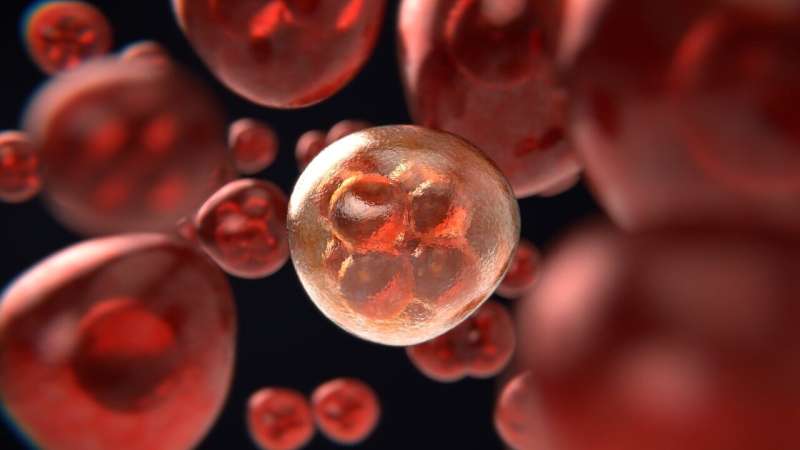
WEHI researchers have documented the diversity of cells in the human breast, explaining the relationship between healthy breast cells and breast cancer cells.
The research, which relied on expertise spanning from breast cancer biology through to bioinformatics, measured gene expression in single cells taken from healthy women and cancerous breast tissue, including tissue carrying a faulty BRCA1 gene. This enabled the researchers to create an “RNA atlas’ that details the different cells found in these tissues.
The atlas, which was described in EMBO Journal, will enable researchers to better understand the different cell types that constitute breast tissue and how these change during the development of cancer.
The research was undertaken by a team including Dr. Bhupinder Pal, Dr. Yunshun Chen and Dr. François Vaillant, and led by Professor Jane Visvader, Professor Gordon Smyth and Professor Geoff Lindeman.
Understanding single cells
The human breast is a complex tissue, comprising a wide range of cells including cells specialized for milk production and release, as well as fat cells and immune cells, Professor Visvader said.
“Different types of breast cancer arise from distinct precursor cells. However, breast cancer development can be impacted by other cells within the breast,” she said. “This atlas provides a high-resolution view into the various cell types that make up breast tissue in different states and a blueprint for studying changes that lead to breast cancer.”
Dr. Pal, who is now a laboratory head at the Olivia Newton John Cancer Research Institute, said ‘single-cell’ technologies enabled the research team to isolate more than 340,000 individual cells from breast tissues donated by women and men and to measure the expression of different genes in these cells.
“Our studies included healthy, pre-cancerous and cancerous tissue, enabling us to study the differences between these tissues,” he said.
A diverse and changing landscape
The research revealed a wide variety of cell types are present in the human breast, Dr. Chen said.
“Complex bioinformatic analysis was crucial for documenting the complex cellular landscape. For example, we found that the composition of a particular subset of cells in the breast was altered by menopause—a period of significant hormonal change within the body,” he said.
The research also revealed many changes that occur within breast cancers, said Dr. Vaillant.
“All the breast cancer types we studied displayed considerable diversity in their tumor cells, as well as in other cells found within the tumor. In particular, hormone-responsive cancers contained fewer dividing cells of a specific immune type, which could explain why many of these tumors are less responsive to anti-cancer immunotherapies.”
A multidisciplinary effort
Single-cell RNA sequencing is a new technology that has revolutionized how researchers can study complex tissues such as the breast said Professor Smyth, joint head of WEHI’s Bioinformatics division.
“Bioinformatics was critical for obtaining a global view of the diverse populations of cells within the different breast tissues we studied,” he said. “Computational methods enabled the team to detect patterns and differences in gene expression in the different cells within the breast at unprecedented resolution.”
Professor Visvader said the cellular RNA atlas was the most comprehensive to-date for the human breast, and provided a framework for understanding the different cell types it can contain.
“This will be an invaluable resource for breast cancer researchers around the world. Our research also has important implications for not only understanding how breast cancers arise but also how cells in the surrounding environment contribute to their development, spread and response to treatment.”
The research team would like to acknowledge the important role that tissue donors, the Victorian Cancer Biobank and kConFab played in this study.
Inflammation a key to targeting pregnancy-associated breast cancer
Bhupinder Pal et al. A single‐cell RNA expression atlas of normal, preneoplastic and tumorigenic states in the human breast, The EMBO Journal (2021). DOI: 10.15252/embj.2020107333
Walter and Eliza Hall Institute of Medical Research
Citation:
New cellular atlas maps out healthy and cancerous breast tissue (2021, May 14)
retrieved 17 May 2021
from https://medicalxpress.com/news/2021-05-cellular-atlas-healthy-cancerous-breast.html
This document is subject to copyright. Apart from any fair dealing for the purpose of private study or research, no
part may be reproduced without the written permission. The content is provided for information purposes only.
Source: Medicalxpress







